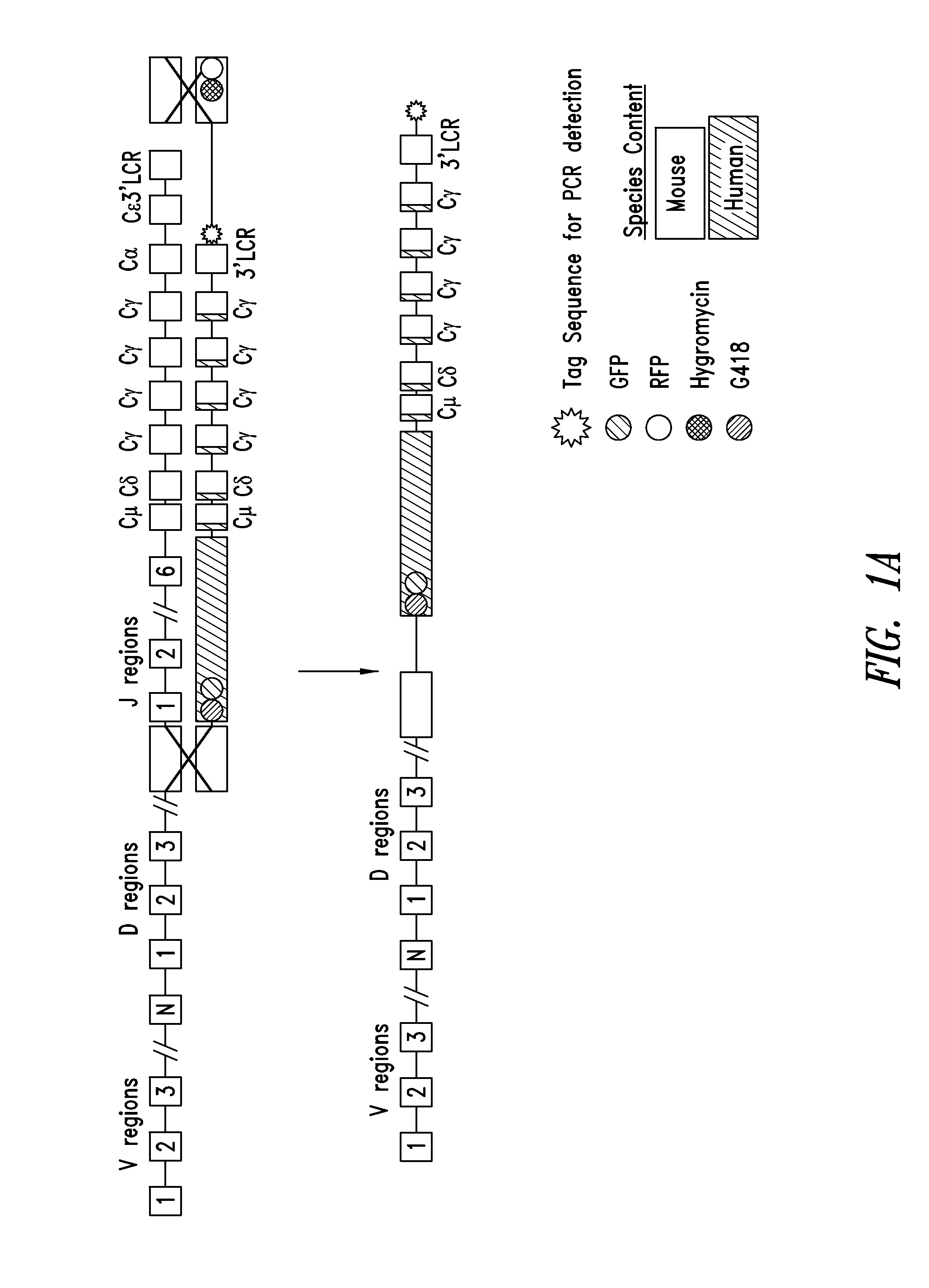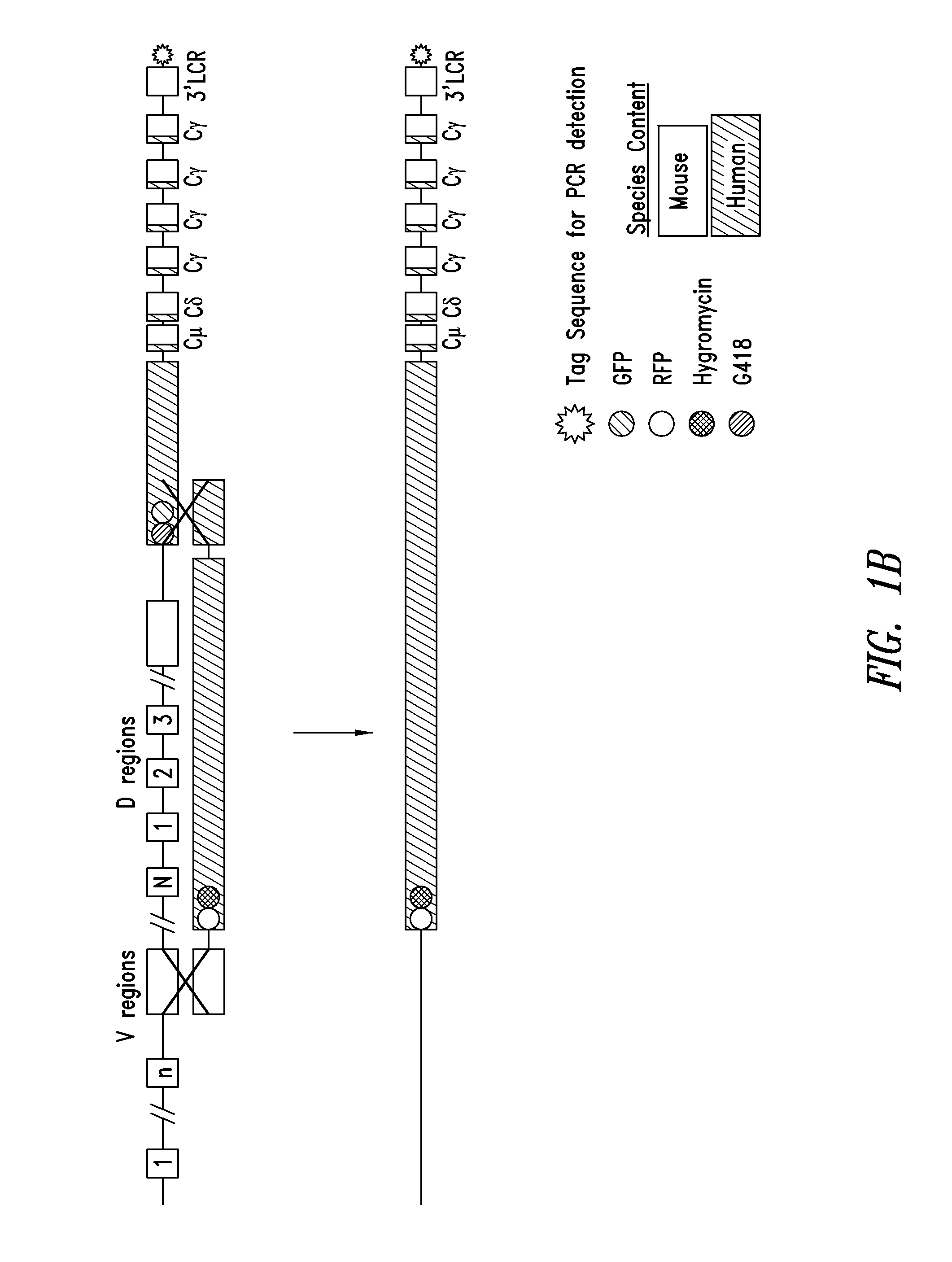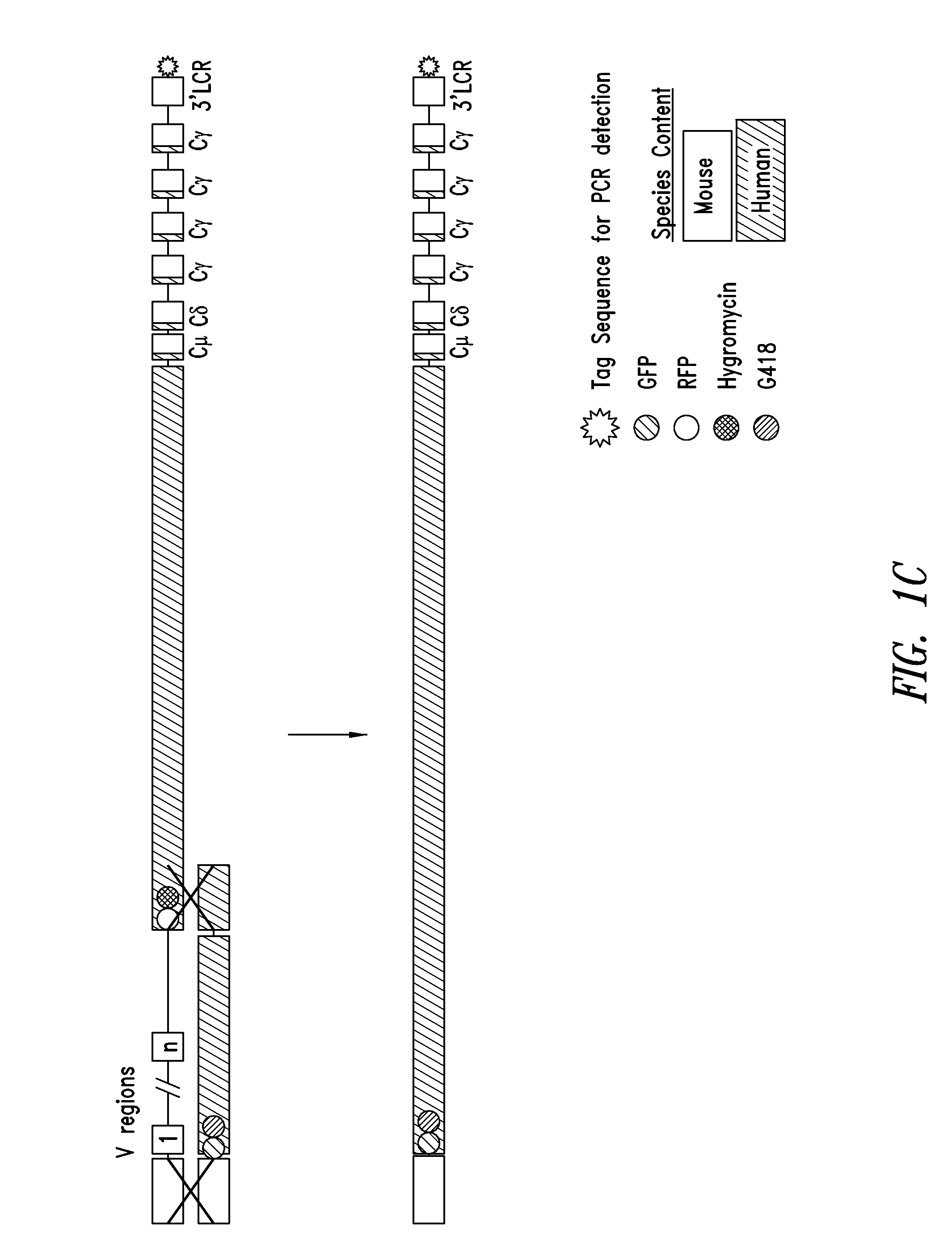Non-human mammals for the production of chimeric antibodies
a technology of chimeric antibodies and non-human mammals, which is applied in the field of non-human mammals for the production of chimeric antibodies, can solve the problems of insufficient potency, ineffectiveness, and inability to detect mabs for use in prevention and treatment, and achieve the effect of higher representation of ig
- Summary
- Abstract
- Description
- Claims
- Application Information
AI Technical Summary
Benefits of technology
Problems solved by technology
Method used
Image
Examples
example 1
Design of BACs in E. coli
[0135]As described in US Patent Application Publication No. 2004 / 0128703, the manipulation of BACs in E. coli provides a powerful tool for fine tailoring of the genomic DNA carried in the BACs. For example, to replace mouse CH1 with human CH1 in one or more of the mouse constant region genes, e.g., Cγ1 or all mouse Cγ genes or mouse Cμ, Cδ and all the mouse Cγ genes, a modified mouse BAC is made in E. coli and then used for homologous recombination in ES cells. For example, in the targeting BAC, the mouse CH1 exons of at least one and up to all of the Cγ genes are replaced by the human CH1 exons. This replacement is similarly performed in E. coli using a homologous recombination method. The resulting modified BAC has a germline-configured segment carrying the human D region, the human J region, and downstream mouse Cμ region, Cδ region, Cγ3 region (mouse CH1 of γ3 is replaced by human CH1), modified Cγ1 region (mouse CH1 of γ1 is replaced by human CH1), mod...
example 2
Homologous Recombination of BACs in E. coli
[0136]A BAC vector is based on the F-factor found in E. coli. The F-factor and the BAC vector derived from it are maintained as low copy plasmids, generally found as one or two copies per cell depending upon its life cycle. Both F-factor and BAC vector show the fi+ phenotype, which excludes an additional copy of the plasmid in the cell. By this mechanism, when E. coli already carries and maintains one BAC, and then an additional BAC is introduced into the E. coli, the cell maintains only one BAC, either the BAC previously existing in the cell or the external BAC newly introduced. This feature is extremely useful for selectively isolating BACs homologously recombined as described below.
[0137]The homologous recombination in E. coli requires the functional RecA gene product. In this example, the RecA gene has a temperature-sensitive mutation so that the RecA protein is only functional when the incubation temperature is below 37° C. When the i...
example 3
Homologous Recombination in E. coli
[0141]According to the procedure detailed above, BAC1 and BAC2 undergo recombination in E. coli. BAC1 and BAC2 have 156,427 by and 122,500 bp, respectively, and they overlap by 42,363 bp. The size of the resulting BAC after recombination and resolution is 236,564 bp. BAC2 containing an Amp gene in the BAC vector or in the appropriate area of the BAC is introduced into an E. coli bacillus carrying BAC1 having a Kan gene in the BAC vector or in the appropriate area of the BAC.
[0142]The introduction of a BAC to E. coli cell is typically done by electroporation. Prior to electroporation, the cells are maintained at 40° C., a non-permissive temperature for recombination, and after electroporation the cells are incubated at 30° C., a temperature permissive for recombination. During the incubation, homologous recombination occurs and cells express enzymes necessary to become resistant to both antibiotics. The incubation period is about 45 to 90 minutes. ...
PUM
| Property | Measurement | Unit |
|---|---|---|
| concentrations | aaaaa | aaaaa |
| concentrations | aaaaa | aaaaa |
| time | aaaaa | aaaaa |
Abstract
Description
Claims
Application Information
 Login to View More
Login to View More - R&D
- Intellectual Property
- Life Sciences
- Materials
- Tech Scout
- Unparalleled Data Quality
- Higher Quality Content
- 60% Fewer Hallucinations
Browse by: Latest US Patents, China's latest patents, Technical Efficacy Thesaurus, Application Domain, Technology Topic, Popular Technical Reports.
© 2025 PatSnap. All rights reserved.Legal|Privacy policy|Modern Slavery Act Transparency Statement|Sitemap|About US| Contact US: help@patsnap.com



